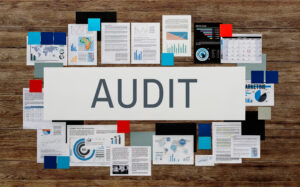Introduction
In the modern world, organizations across various industries manage a plethora of assets, ranging from physical infrastructure to intangible resources. Effective management of these assets is crucial for ensuring operational efficiency, sustainability, and profitability. One of the most comprehensive frameworks for asset management is ISO 55001:2014. This international standard provides a structured approach to managing assets, helping organizations achieve their objectives through effective and efficient asset management practices.
What is ISO 55001:2014?
ISO 55001:2014 is an international standard for asset management systems, published by the International Organization for Standardization (ISO). The standard specifies requirements for establishing, implementing, maintaining, and improving an asset management system. It applies to all types of assets and organizations, regardless of their size, type, or sector. By following the guidelines of ISO 55001:2014, organizations can develop a systematic approach to managing their assets throughout their life cycle, from acquisition to disposal.
Key Benefits of Implementing ISO 55001:2014
Enhanced Decision Making: ISO 55001:2014 enables organizations to make informed decisions about their assets. By providing a structured framework for asset management, the standard helps in identifying, assessing, and mitigating risks associated with assets, leading to better strategic planning and resource allocation.
Improved Performance and Efficiency: Implementing ISO 55001:2014 can significantly enhance the performance and efficiency of an organization. The standard promotes the use of best practices and continuous improvement processes, ensuring that assets are utilized optimally and maintained in a manner that maximizes their value and lifespan.
Compliance and Risk Management: Adhering to ISO 55001:2014 helps organizations comply with regulatory requirements and industry standards. It also aids in managing risks associated with assets, such as operational failures, financial losses, and safety hazards, thereby safeguarding the organization’s reputation and ensuring business continuity.
Cost Reduction: Effective asset management as per ISO 55001:2014 can lead to significant cost savings. By optimizing asset utilization, reducing downtime, and preventing costly breakdowns, organizations can minimize operational expenses and improve their bottom line.
Stakeholder Confidence: ISO 55001:2014 certification demonstrates an organization’s commitment to asset management excellence. This can enhance stakeholder confidence, attract investors, and improve customer satisfaction by ensuring the reliability and availability of the organization’s assets.
Implementing ISO 55001:2014
The implementation of ISO 55001:2014 involves several key steps:
Gap Analysis: Conducting a gap analysis to assess the current state of asset management practices and identify areas that need improvement to meet the requirements of ISO 55001:2014.
Planning and Development: Developing an implementation plan that includes defining asset management objectives, policies, and processes. This step involves establishing roles and responsibilities, as well as allocating necessary resources.
Training and Awareness: Providing training and raising awareness among employees about the importance of asset management and the requirements of ISO 55001:2014. This ensures that everyone in the organization is aligned with the asset management goals.
Implementation and Monitoring: Implementing the asset management system and continuously monitoring its performance. This involves regular audits, performance evaluations, and making necessary adjustments to ensure compliance with ISO 55001:2014.
Continuous Improvement: Emphasizing continuous improvement by regularly reviewing and updating the asset management system. This ensures that the organization remains agile and responsive to changing business needs and environmental conditions.
Conclusion
ISO 55001:2014 provides a robust framework for asset management, enabling organizations to optimize their asset performance, reduce costs, and manage risks effectively. By adhering to the principles and requirements of ISO 55001:2014, organizations can enhance their operational efficiency, ensure regulatory compliance, and achieve their strategic objectives. Implementing ISO 55001:2014 is not just about meeting a standard; it is about embedding a culture of excellence in asset management that drives long-term success and sustainability.



